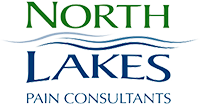Fibromyalgia and Exercise: Increasing Strength to Relieve Pain
Fibromyalgia and Exercise: Increasing Strength to Relieve Pain
Fibromyalgia and Exercise: Increasing Strength to Relieve Pain
For people with fibromyalgia, exercise is the last thing on their minds. Some even find it hard to go about their daily activities due to pain and fatigue. When done right, exercise can ease pain, improve sleep, and give you more energy.
What is Fibromyalgia?
Fibromyalgia is a chronic illness that causes extreme muscle pain, mental distress, and fatigue. The cause of fibromyalgia is unknown though some researchers believe the cause to be an overactive nervous system.
Fibromyalgia pain can be extreme, causing one to avoid exercise or any movement. Lack of physical activity can lead to muscle damage, weight gain, and other health problems.
Symptoms of Fibromyalgia
Fibromyalgia symptoms often start after physical trauma, surgery, infection, or psychological stress. The symptoms include;
- Widespread pain:- patients explain it as a persistent dull ache lasting for more than three months.
- Fatigue
- Cognitive difficulties which impair one’s ability to focus and concentrate on mental tasks
Fibromyalgia and Exercise
For people with fibromyalgia, exercise can prevent chronic pain by strengthening muscles and preventing muscle damage and wasting. Exercise also helps manage other symptoms like depression, sleep disorders, and concentration difficulties.
Best Exercises For People With Fibromyalgia
To find the best exercise, you will have to try different types of exercise until you find one that works for you. The best exercises combine physical movement and mindfulness.
At first, exercise will hurt during and after the workout, but it will get better with consistency. Start slow and work your way up to prevent getting fibromyalgia flares. The best exercises to try are;
Aerobic exercises
These exercises get your heart beating a little faster. They include exercises like swimming, walking, cycling, and dancing.
Aerobic exercises provide the quickest return to normal functions. They also improve muscle function and restore muscle strength in people with fibromyalgia.
Tai chi
It is a low-impact exercise that incorporates deep breathing and stretching with slow controlled movements. Tai chi will improve both your physical and physiological symptoms. It helps you relax, improves your balance, lowers your stress, and builds muscle strength.
Resistance and strength training
They increase muscle strength and relieve symptoms like pain and depression from fibromyalgia. Resistance and strength training involves exercise using resistance bands, water resistance, free weights, and bodyweight resistance versus gravity
Yoga
For yoga involves movements, stretches, and poses that increase flexibility, balance, and strength. If you have a challenge with a range of motion, talk to your instructor for modifications.
Talk To North Lakes Pain
Fibromyalgia is a painful lifelong condition that can affect your quality of life and mental health. To learn more about ways to manage chronic pain, visit our website or request an appointment by filling out the form below to talk to our pain management doctor.
